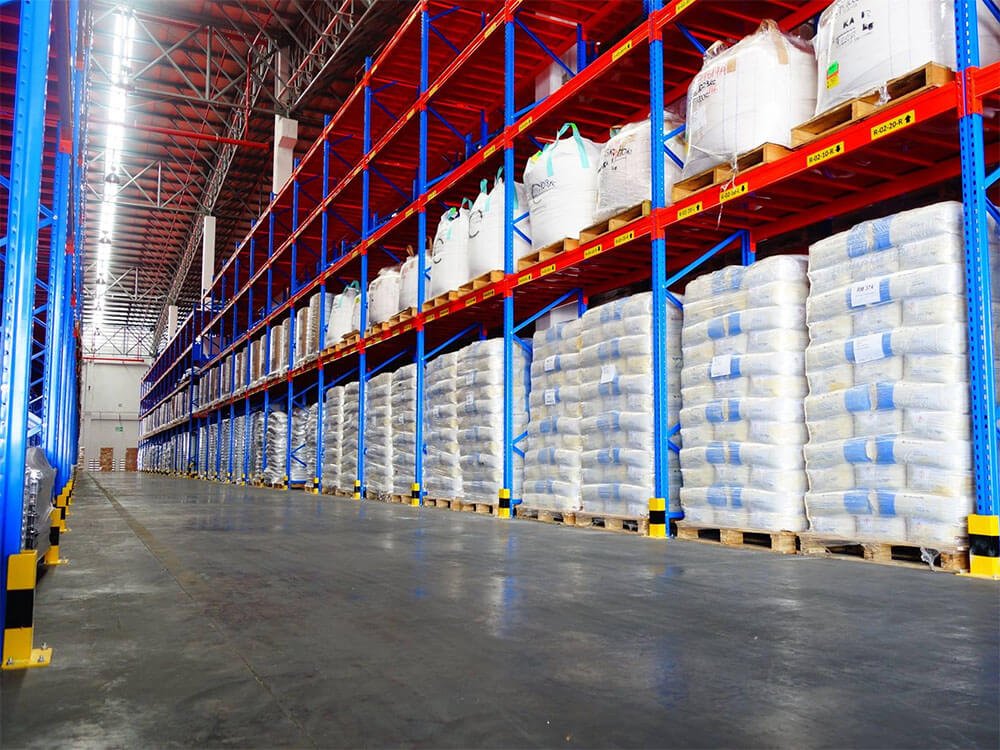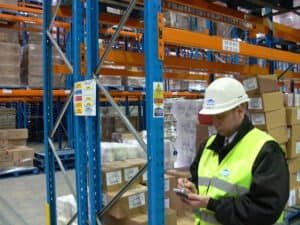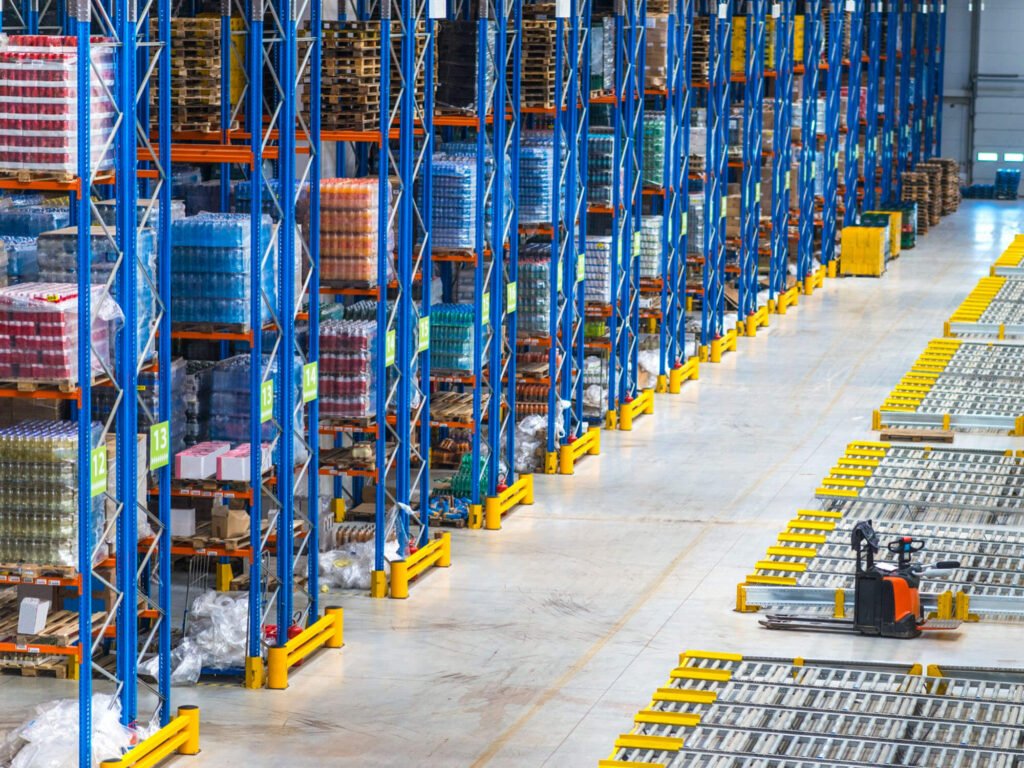Comparing raw material storage and finished goods storage is like setting apples and oranges side by side. They’re both fruits, but they have specific features that set them apart. Deeper studies will reveal substantial differences between these two key areas of warehouse management in various aspects, including storage conditions, handling standards, and security measures.
Knowing the distinction between these two storage types is essential for a well-organized and effective warehouse. Businesses that understand what each sort of storage requires will better monitor their inventory, save money, and ensure that everything works smoothly.
This article will go over all the intricacies of raw material storage and finished goods storage, giving you the inside scoop on everything from the finest methods to store things to savvy inventory tactics.
Raw Material Storage: A Deep Dive
The key to raw material storage is to preserve those components until they are turned into something wonderful. Let’s get right into explaining the value of good storage and looking at many approaches to maintain those raw materials arranged and prepared for use!
What Are Raw Materials?
Imagine you’re making a cake. You’ll need flour, sugar, eggs, and maybe some chocolate chips. These are your raw materials, the essential building blocks that will help you create a tasty end result. In the industrial sector, raw materials are the same notion, but of a much greater size.
The term refers to unprocessed or slightly processed resources that are used to manufacture final items. They include anything from metal ores and crude oil to wood pulp and agricultural commodities. Different businesses use different raw materials, and the kind of material determines how it should be kept.

Why Proper Raw Material Storage Matters?
As mentioned above, each raw material type requires relatively distinct storage practices. That explains why storing raw materials correctly is vital. The following are some of the valuable benefits you’ll get from this healthy practice:
- Enhancing quality control: Proper raw material storage ensures that your items retain their quality, whether by keeping metals from rusting, liquids from deteriorating, or powders from clumping. This means that the finished goods you create will be awesome, your clients will be delighted, and your brand will get high praise!
- Cost-effective: In addition, this practice can save you money! By limiting spoilage and waste, you increase the value of your raw resources while reducing unnecessary expenses. It’s like ensuring you utilize all of the products in your refrigerator before they expire.
- Improving warehouse efficiency: Well-organized raw material storage facilitates efficient manufacturing. Workers can effortlessly find the resources they need, resulting in smoother workflows, quicker production times, and, ultimately, more profitability.
Storage Methods For Raw Materials
Now that you know raw materials are the VIPs of the industrial sector, it’s time to learn about the numerous inventory systems used to manage these resources. Let’s look at the most common storage options below.
Bulk Storage
Bulk storage provides a practical and economical option for keeping huge amounts of raw materials. This approach is often used for items such as petroleum, chemicals, building materials, and food products. It offers various benefits over standard packaged storage, including lower packaging waste, more efficient handling, and improved storage capacity.
Various storage tanks accommodate different sorts of raw materials. Liquids and gases are best stored in tanks, vats, drums, and silos, while dry, flowable chemicals are housed in super sacks. Moreover, Intermediate Bulk Containers (IBCs) are versatile, allowing the storage of various items, ranging from food-grade liquids to hazardous chemicals.
Rack Storage
Consider your garage shelves, but larger and built of heavy-duty steel. That’s what most materials storage racks (such as pallet racks and cantilever racks) are all about! They’re intended to store pallets laden with raw materials, making them perfect for orderly and easily accessible inventory.
Besides those benefits, these raw material storage racks are also adaptable, meaning they can hold a wide range of pallets and loads. With adjustable beams and many configurations, they can be tailored to your exact requirements, thereby increasing warehouse space utilization.
Shelving
Not all raw materials arrive in bulk or on pallets. Smaller objects, such as nuts, bolts, or electrical components, also need a home. That’s when light duty shelving comes in handy!
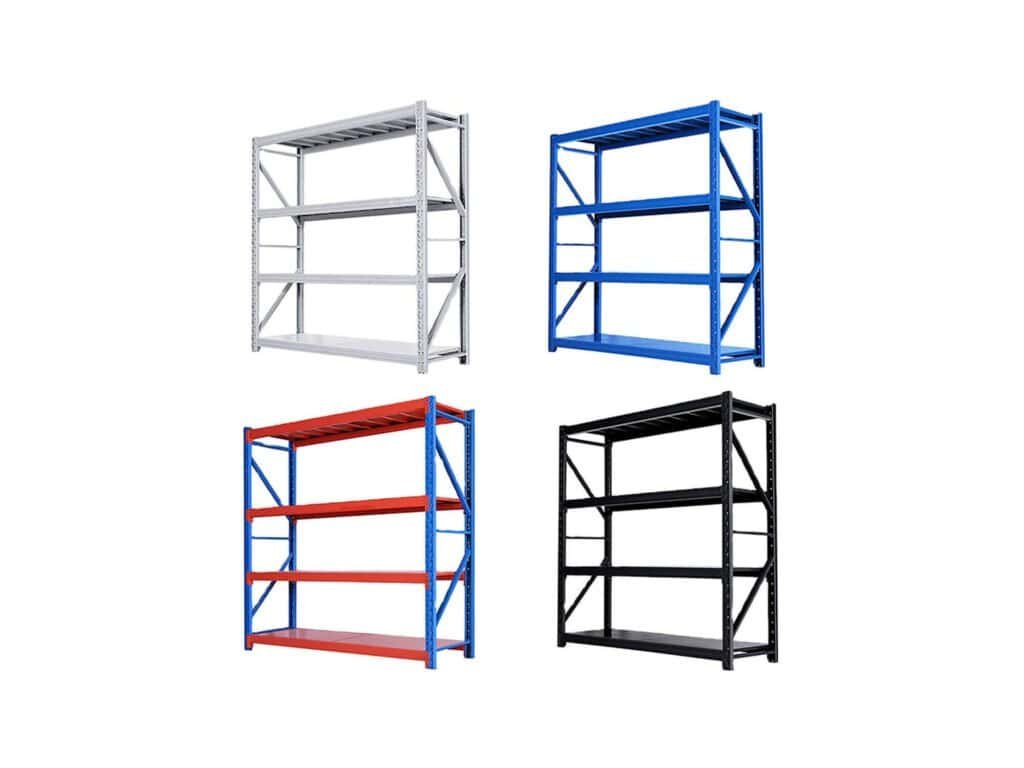
Shelving systems are a simple and tidy method to store these smaller objects, keeping them off the floor and accessible. They come in a variety of sizes, materials, and layouts, enabling you to tailor your storage to the exact objects you’re working with.
Furthermore, this inventory solution is cost-effective for keeping smaller amounts of raw materials, making it a popular choice among enterprises of all sizes.
Specialized Storage
Certain raw materials are somewhat more demanding than others. They need specific care to keep them in tip-top form. For example, perishable items such as food ingredients must be refrigerated or frozen, or dangerous chemicals require special storage conditions to avoid mishaps.
To handle these unique cases, you’ll need to rely on specialized storage solutions. These systems include temperature and humidity controls, ventilation capabilities, and other safety elements to guarantee that these delicate products are stored properly.
Finished Goods Storage: The Final Stage
What happens once the raw ingredients are converted into gleaming new products? Welcome to the realm of finished goods storage, where final items await their wonderful appearance on shop shelves or at customers’ doorsteps. Let’s look at how this last step works and why it’s essential for organizations.
What Are Finished Goods?
Finished products are the final result of a complicated manufacturing process that involves various raw materials, components, and labor. They exist in a variety of forms and sizes, from little electronic devices to large industrial machinery. Consider the clothing you wear, the food you consume, and the furnishings in your house; they’re all completed items.
But finished goods contain not only the products but also their packaging. From the sparkling boxes that new phones arrive in to the robust crates used to carry big gear, they’re part of the “finished goods” category as well. Their main role is to ensure the completed items arrive in perfect shape.
Why Efficient Finished Goods Storage Is Crucial?
Ever wondered why the bright new things you purchase online arrive in pristine condition, even after flying across the country? That’s the magic of an effective finished goods warehouse! Have a look at the following advantages you can gain from it:
- Guaranteeing order completion: Effective storage guarantees that your completed items are available for client demand and prevents stockout situations. This allows you to fulfill requests more quickly and keep your customers satisfied.
- Speeding up delivery: The sooner you can move things out of the warehouse and into the hands of clients, the better. Organized storage allows your personnel to discover and collect the correct items for orders, thereby minimizing lead times and increasing total delivery speed.
- Safeguarding goods: Finished items are often sensitive and susceptible to damage if not handled with care. Effective storage keeps them safe from dust, moisture, and other risks, guaranteeing they reach their destination in perfect conditions.
Storage Methods For Finished Goods
Once the final items are available, where do they stay? The answer is that they’ll remain in your warehouse until the relevant customer orders are processed. During that time, you’ll need to have the proper storage system to keep them secure, organized, and accessible. Let’s look at some of the most common storage techniques for finished goods below:
Pallet Racking
Pallet racking is undoubtedly the most popular method to house completed items since it’s very adaptable and can accommodate a broad variety of things, from little boxes to large appliances.
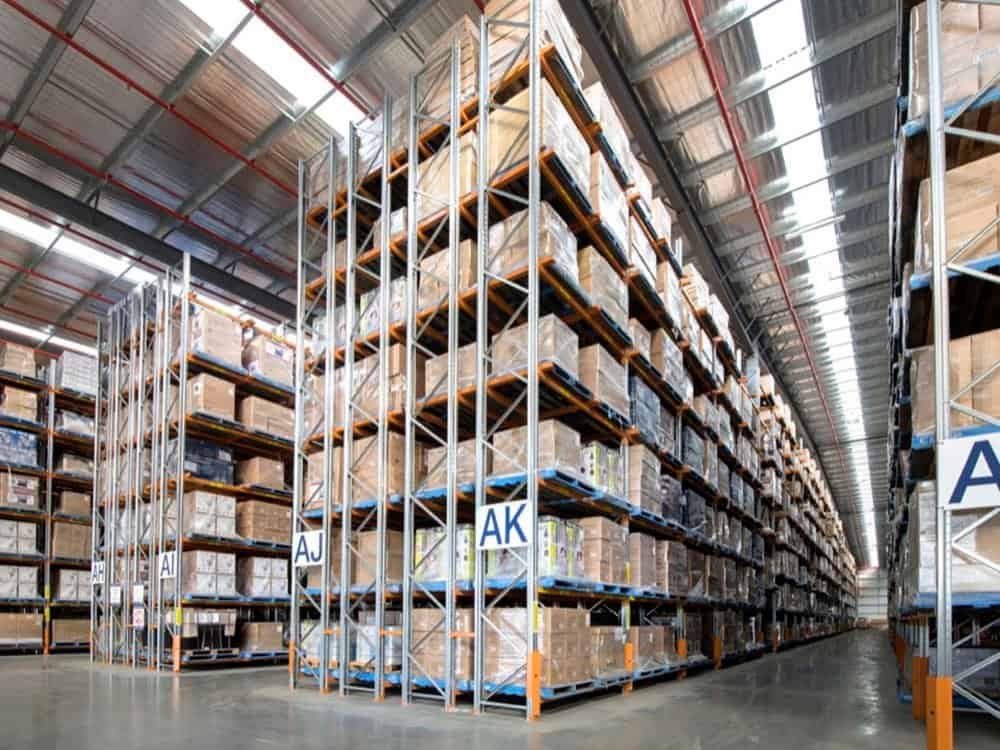
Like materials racks, with many pallet rack types available, such as selective racks (quick access to any pallet) and drive-in racks (highest storage density), you can effortlessly tailor the system to your warehouse’s specific requirements.
Shelving
Like raw material storage, shelving units are also handy for smaller finished products that do not require a whole pallet. Besides conventional types, there are also movable shelves, on which you can design bespoke compartments for various sorts of merchandise.
Automated Storage And Retrieval Systems (AS/RS)
Here’s where things become futuristic! You can picture AS/RS systems as massive robots zipping about a warehouse, picking up and storing items with extraordinary speed and accuracy.
These automated systems are intended to improve productivity while minimizing mistakes, making them ideal for big warehouses with huge inventory quantities. They can get particular items in seconds, saving your personnel significant time and effort.
While AS/RS systems may be expensive to implement, they often pay for themselves in the long run via increased productivity and decreased labor costs.
Cross-Docking
You can think of cross-docking as the warehouse industry’s quick lane. It’s a lightning-fast procedure in which inbound cargo is transferred directly to outgoing vehicles without being stored.
It’s like a well-choreographed ballet, with items sorted, tagged, and loaded into trucks in only a few hours. Cross-docking is perfect for perishable items or products in high demand since it reduces inventory time and allows them to reach consumers as fast as feasible.
Best Practices For Both Raw Material Storage And Finished Goods Storage
The main goal of both raw material storage and finished goods storage is to maintain the products in peak condition while they’re sitting in your warehouse. The following are some basic practices to help you nail that goal:
- Managing stock carefully: Use effective tactics such as FIFO (first use the oldest items) or LIFO (first use the newest items). And, yes, barcodes and scanners may be your best friends here. They let you keep track of what’s coming and leaving, ensuring that you never run out of that best-selling item!
- Ensuring top-notch safety: If you’re keeping dangerous products like flammable liquids or caustic chemicals, always exercise extreme caution to avoid accidents. Make sure everything is correctly labeled and housed in very safe containers. Don’t forget to instruct your personnel to handle these materials like professionals.
- Optimizing warehouse space: Besides expanding horizontally to boost your storage capacity, you can make the most of every available area by thinking vertically! Store your supplies on tall shelves or in stackable bins to free up valuable floor space for other operations.
- Monitoring product quality: Just as you check your groceries for freshness before utilizing them, you should monitor the product quality in the same way. Regular check-ups and testing may help you identify any issues early on, such as spoilage or damage. This way, you won’t wind up with a lot of useless rubbish and can ensure that your items are always of high quality.
- Knowing your materials: Consider what your items need to stay happy and healthy. It can be a dry climate, a precise temperature, or even unique packaging. Knowing the idiosyncrasies of your inventory will allow you to store it correctly and prevent unpleasant surprises.
- Handling goods properly: Your stored items, especially final products, must be treated with care to prevent damage during storage or transportation. Don’t forget about the packing, as sturdy boxes, bubble wrap, and other protective items help ensure that your goods reach buyers safely.
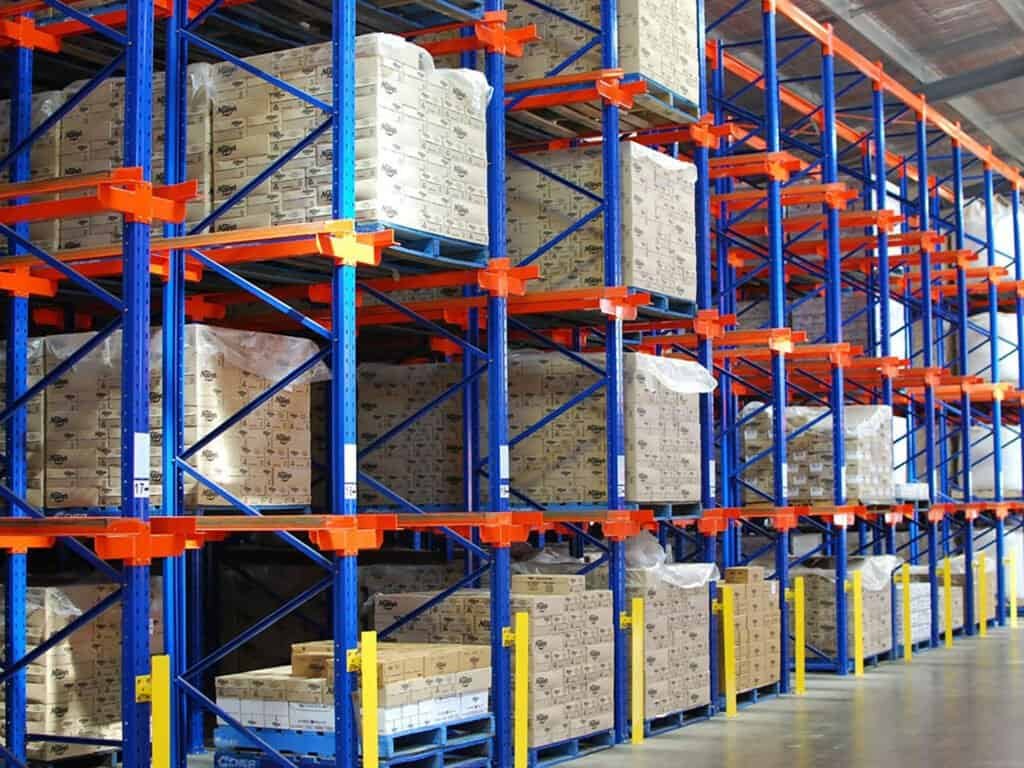
Key Differences Between Raw Material Storage And Finished Goods Storage
You have just gone through the foundations of raw material and final products storage. But what are the key differences between these two concepts? Let’s find out straight away, beginning with a small comparison table!
| Criteria | Raw Material Storage | Finished Goods Storage |
|---|---|---|
| Storage Environment | Requiring specialized conditions (temperature, humidity, safety) | Typically standard warehouse environment |
| Handling Equipment | Needing specialized equipment (cranes, hoists) | Standard forklifts and pallet jacks usually suffice |
| Inventory Management | Tracking weight, volume, or other units | Tracking SKU (stock keeping unit) |
| Security Measures | Typically less stringent | Often stricter due to higher value |
#1: Storage Environment
Raw materials can be picky about their living environments. Some, such as certain chemicals or food components, need exact temperature and humidity control to stay fresh. Other dangerous products need additional safety measures, such as ventilation or fire suppression systems.
Finished items, on the other hand, are less demanding and are often housed in normal warehouse facilities.
#2: Handling Equipment
Moving raw materials around may be similar to herding a wild animal. Depending on the material, you’ll need specialized equipment, such as cranes, hoists, or conveyor belts.
But finished items are often neatly wrapped and can be handled using regular forklifts or pallet jacks.
#3: Inventory Management Systems
Raw ingredients are often monitored using weight, volume, or other metrics, similar to how you would measure flour or sugar for baking. In certain situations, specialist software is employed to track their expiry dates and batch numbers.
Finished items, on the other hand, get their own unique identifiers known as SKUs. Consider it like a fingerprint for each product, making it very simple to recognize. This allows warehouse workers to rapidly discover the correct products to pack and transport your orders.
#4: Security Measures
Finished products are like bright new toys that everyone desires! That is why companies often want more strict security measures than raw materials. Consider keeping your valuables locked up in a safe. To avoid theft and damage, finished goods storage areas may include alarms, security cameras, and even guards.
Raw materials storage areas, although still vital to safeguard, may not need as much Fort Knox-level security as above.
Choosing The Right Storage Solution For Your Business
With so many alternatives available, how can you select the best storage solution for your firm? If you’re having a tough time dealing with this choice, let the following section help you. Here, you’ll find certain factors to consider, as well as insider tips on what you should do to nail the final decision.
Factors To Consider
First off, consider the kind of company you run and the sector you operate in. Are you a bakery that stocks flour and sugar, or a tech business that handles sensitive electronics? Varied businesses have different storage requirements, just as you wouldn’t keep ice cream and bread in the same freezer.
Next, think about how much stuff you need to keep and how frequently it comes and goes. Are you coping with a mound of constantly changing inventory? Or do you have a smaller, more steady inventory? Knowing this can assist you determine the amount and kind of storage you need.
Of course, never leave out your budget in the decision-making process. How much are you willing to invest on storage? Don’t forget to consider the cost of the space itself, any equipment you may want, and any other services that certain storage providers offer. Remember, you don’t want to squeeze everything into a small area or wind up with a massive, empty warehouse. It’s all about getting the best fit!
Expert Tips
Investing in excellent storage equipment is the best advice you can pass on to other people after reading this guide. It’s tempting to go with the cheapest option, but remember that you get what you pay for. Durable and well-crafted equipment will offer excellent protection for your raw materials and final items, lowering the danger of damage and extending their lifespan.
Also, regularly examine and improve your procedures. Naturally, your storage demands will vary over time. Thus, keep an eye on changes and alter your processes appropriately. This might include improving your storage arrangement, upgrading your equipment, and applying new stock management strategies.
Conclusion
This article has covered many aspects of raw material storage and finished goods storage, from a deep examination of each concept to the pair’s comparison. It’s been a crazy journey, but perhaps you’ve learned a few things that can help you improve your storage skills!
Hopefully, reading this guide can help you understand your inventory demands better and design a more appropriate solution for your business. Thanks for reading!

